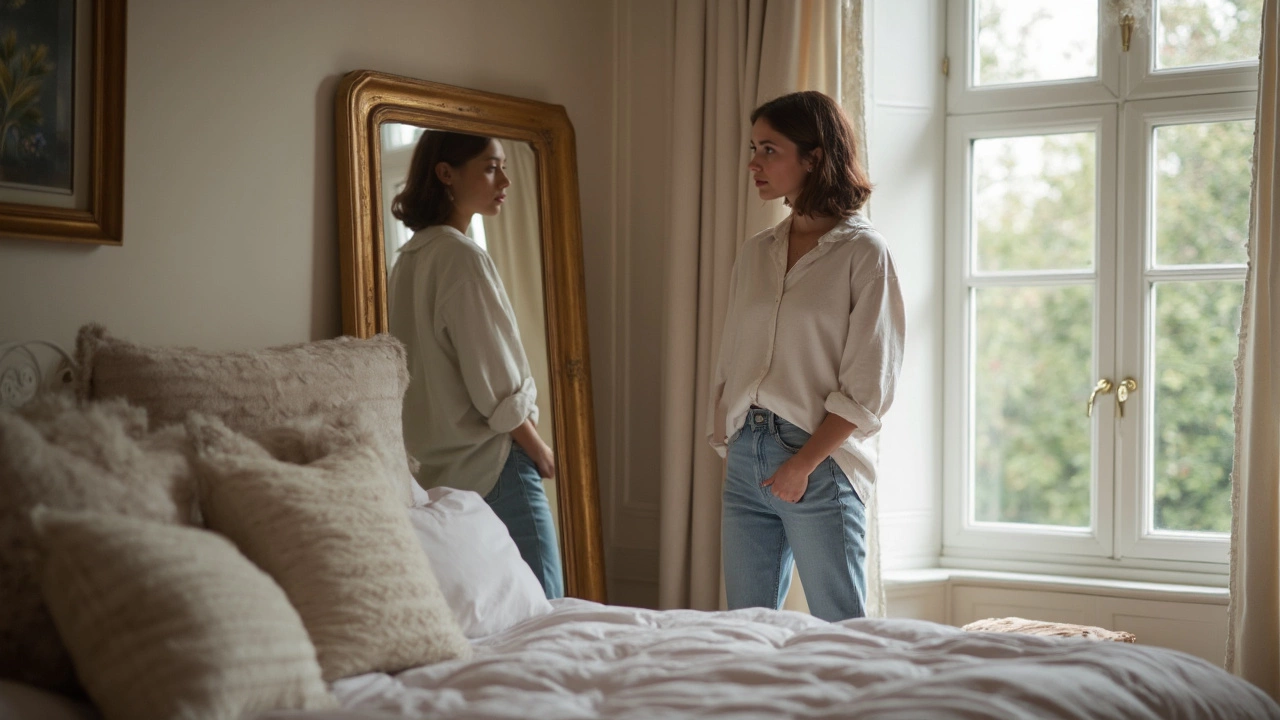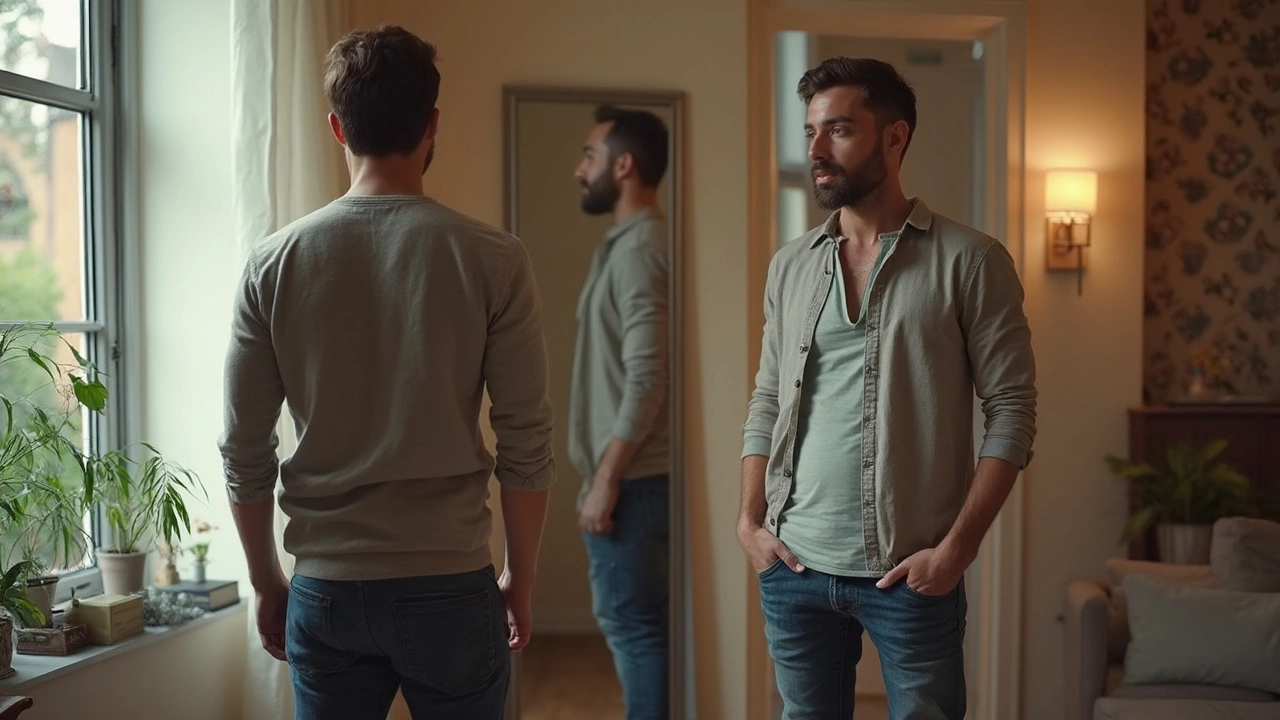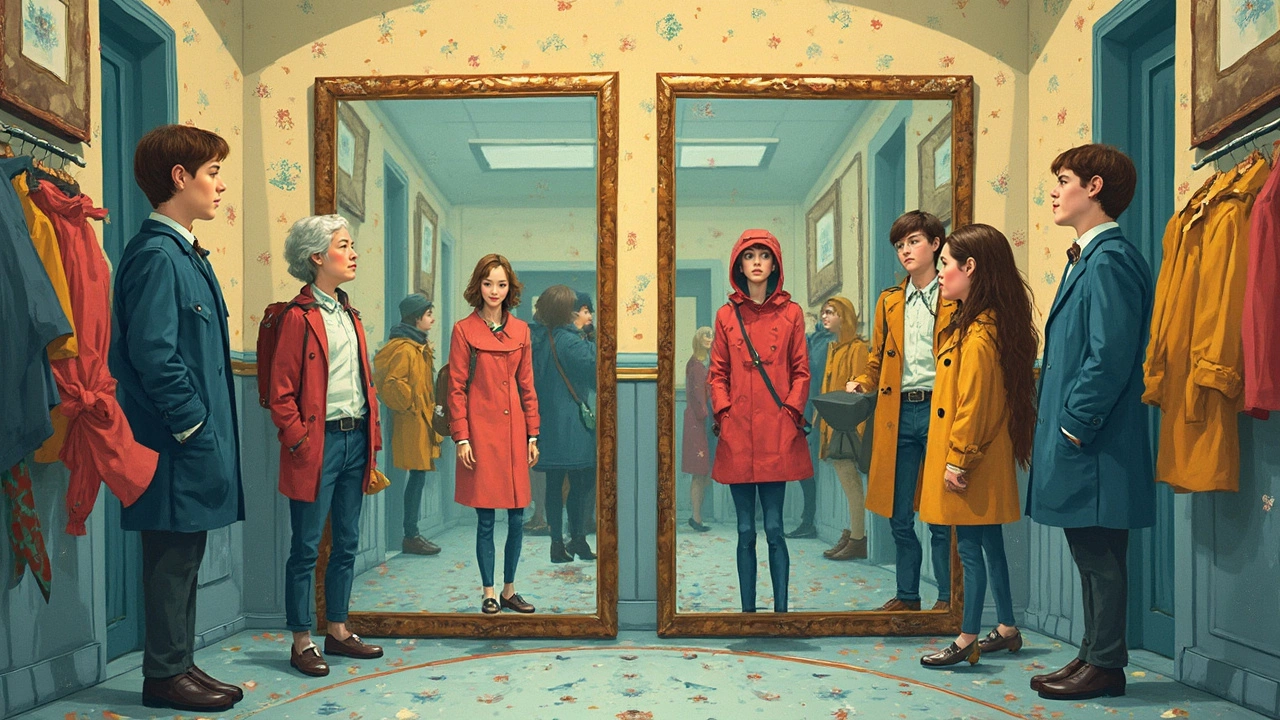Do Full-Length Mirrors Make You Look Thinner?

Ever noticed you look slimmer in some mirrors than others? You’re not seeing things—mirrors can totally mess with your mind (and your reflection). That’s not just your imagination or a trick of the light. There’s actual science behind it.
If your bedroom mirror seems to slim you down while the one at the gym adds a few pounds, it’s probably down to things like the mirror’s shape, thickness, and even where it’s hanging. A full-length mirror can show you a slightly different version of yourself compared to a small, warped bathroom mirror.
Some mirrors, especially cheap or thin ones, can bend just a little under their own weight or from sloppy installation. That slight curve means light doesn’t bounce back in a straight line, and your body’s shape stretches or shrinks in the reflection. So, if you want to know what you really look like, the type of mirror you pick matters more than you might think.
- The Science Behind Mirror Reflections
- Why Mirrors Sometimes Lie
- Does Mirror Size or Shape Matter?
- Tips to Choose a Trustworthy Mirror
- When Should You Trust What You See?
The Science Behind Mirror Reflections
Let’s get into how a full-length mirror actually works. At its core, a standard mirror is just a piece of glass with a thin metal coating (usually aluminum or silver) on the back. When light bounces off you and hits the glass, that coating bounces the light back and gives you your reflection. But, here’s where it gets interesting: the way your body looks in the mirror depends on a bunch of factors you probably don’t think about day-to-day.
The mirror's thickness plays a bigger role than most people realize. Thicker mirrors are less likely to bend or flex under their own weight. If a mirror flexes, it warps the image—stretching or compressing your body shape. That’s why gym and clothing store mirrors (which are usually thicker and well-mounted) tend to give truer reflections compared to that flimsy hallway mirror at grandma’s house.
Even a slight curve can make a huge difference. Here’s a quick rundown:
- A convex mirror (curved outward) will make you look a bit shorter and wider.
- A concave mirror (curved inward) has the opposite effect—think funhouse mirror, but on a subtle level, making you slimmer and taller.
- Flat, high-quality full-length mirrors are your best bet for accuracy.
Mounting matters too. If a mirror isn’t installed flat against the wall or is leaning just a little, the reflection can change. Even shoddy adhesive or loose screws can alter what you see.
If you want numbers, researchers out of the University of Liverpool found that even a tiny bend (1-2 mm along the length of a large mirror) can make the reflected image appear up to 6% slimmer or wider, depending on the direction of the curve. That’s not much, but it's enough to change how your clothes look in a full-length mirror versus in a photo or real life.
So, the next time your reflection looks off, don’t blame yourself—blame the science (and maybe your mirror’s mounting hardware).
Why Mirrors Sometimes Lie
Ever stood in front of two full-length mirrors and thought you looked like two totally different people? You’re not crazy. Mirrors sometimes give you a distorted view, and there are some pretty simple reasons for it.
First off, a lot depends on the thickness and quality of the mirror. Thin mirrors, especially the budget ones, bend really easily. Even a tiny bend you can’t see with your eyes will stretch or squish your reflection. Suddenly, you look a bit taller and slimmer, or wider and shorter, even though you didn’t change at all.
Another sneaky trick is the angle. A mirror that’s leaned back just a little at the top gives you a slightly taller and leaner look. You might notice stores sometimes angle their full-length mirrors this way on purpose (especially in fitting rooms—go figure). On the flip side, if the bottom is tilted forward, it can make you look shorter or bulkier.
Lighting is also a top sneaky factor. Poor light creates shadows and weird reflections that can change how defined you look. Bright, even lighting is best for seeing a more accurate version of yourself. Ever notice those harsh lights in some fitting rooms that seem to make every little bump stand out? Not an accident.
Here's a quick breakdown of how these factors play with your reflection:
- Mirror quality: Thin or low-quality, more likely to warp the image
- Angle of installation: Leaned back, you look slimmer; leaned forward, you look stockier
- Lighting: Soft, even lighting is friendlier to your reflection; harsh, uneven light can amplify flaws
- Frame shape: Curved or flexible frames also mess with the image
According to data from home improvement stores in 2024, about 40% of people said they noticed their body looked different in various full-length mirrors at home versus in stores. The biggest culprits were oddly placed mirrors and budget models that flex just a bit under their own weight.
So don’t panic if you feel like a superstar in one mirror and just “meh” in another. The mirror itself, not your body, is doing a lot of the heavy lifting.

Does Mirror Size or Shape Matter?
It definitely does. The size and shape of your full-length mirror play a huge role in how you see yourself. A tall, wide mirror gives you a full view and doesn't chop your body in weird spots, so you see everything in proportion. But when a mirror is too small or too narrow, parts of your body get cut out or squished, which can make you look different—sometimes thinner, sometimes wider.
Curved mirrors, even a super slight curve, change your reflection. Convex mirrors spread out the image and make you look a bit shorter and squatter, kind of like those funhouse mirrors at carnivals. Concave mirrors can do the opposite, stretching your look vertically, so you may appear longer and sometimes leaner. Most folks don’t buy mirrors with obvious curves, but even a poorly hung or low-quality mirror might bow just enough to throw things off.
The thickness of the glass also counts. Quality full-length mirrors are usually at least 3-4mm thick. Thinner glass warps more easily over time. Cheap, thin mirrors are more likely to bend, especially taller ones, making your reflection look a little "off."
- Large, thick mirrors keep your reflection true-to-life.
- A mirror's frame can also mess with shape—thick or uneven frames sometimes press on the glass, causing subtle distortion.
- Where you place your mirror matters—leaning it against a wall instead of hanging it can change the angle and even bow the glass.
If you’re shopping for a full-length mirror and want the most accurate look, go for a wide, tall model with thick glass. Hang it flat and make sure the wall is straight. Quick test: stand about six feet away and check for any weird bulges or waves in the reflection. If things look wonky, keep looking for a better mirror.
| Mirror Type | Typical Effect on Reflection |
|---|---|
| Thin/cheap mirror | May distort, making you look wider/thinner |
| Curved surface | Stretches or squashes body shape |
| Thick, flat mirror | More true-to-life |
Tips to Choose a Trustworthy Mirror
Picking the right full-length mirror means you’ll get a real look at yourself—no weird stretching or shrinking. So how do you find one that tells the truth? It's all about paying attention to a few simple details when you shop.
- Check the thickness: Mirrors that are at least 1/4 inch thick don’t bend as much. Thinner ones often warp, especially if you hang them without any support or backing.
- Get the right backing: Look for mirrors mounted on a sturdy board. Cheap ones with flimsy backs tend to flex and distort your reflection.
- Test it in the store: Step back a few feet and walk by the mirror from different angles. If you notice your reflection stretching or shrinking as you move, that’s a bad sign.
- Flat is best: Avoid convex (curved out) or concave (curved in) designs unless you’re aiming for a funhouse look. You want the glass as flat as possible.
- Frame matters: Frames add stability. Frameless mirrors look sleek but are easier to warp, especially if you lean them against a wall.
Dr. Paul Knox, a professor of neuroscience at the University of Liverpool, once said:
"Even slight bends in a mirror can subtly alter your body shape and size in the reflection, so always check that your mirror is flat and well-supported."
Size matters, too. The bigger the mirror, the more likely it’ll show your full body without creating weird distortions. Stick to full-length types that stand at least five feet tall for best results.
| Mirror Type | Recommended Thickness | Distortion Risk |
|---|---|---|
| Wall-mounted | 1/4 inch | Low |
| Lean-against wall | 3/16 – 1/4 inch | Medium |
| Thin decorative | 1/8 inch | High |
If you already own a mirror but aren't sure if it's reliable, try standing at different spots or comparing it with a mirror in a clothing store. If it gives you the same look every time, you probably have a good one. Don’t fall for the skinny-mirror marketing tricks—a solid, sturdy, and flat full-length mirror is all you really need.

When Should You Trust What You See?
Here’s the honest truth: you can’t trust every reflection, no matter how fancy your full-length mirror looks. Some mirrors straight-up lie, thanks to the way they’re made or where they’re placed. But you can spot a reliable mirror if you know what to look for.
First off, stand directly in front of your mirror. Angle matters a lot. If the mirror is leaning against the wall—even just a little—that can add a slimming or widening effect. The most trustworthy reflection comes from a mirror hung perfectly flat against the wall, right at eye level.
- Thickness: Thicker mirrors (at least 3/16 inch) are less likely to bend or warp, so they won’t distort your shape.
- Flatness: Run your fingers lightly along the surface. If you feel a curve or dip, it’s not showing your real shape.
- Lighting: Natural, even light is key. Shadows and weird lighting can add or remove pounds in your reflection.
- Backing: A proper, sturdy backing keeps the mirror from flexing over time.
If you want to really check your mirror, try this: Put a ruler or something perfectly straight right against the mirror. If you see gaps or twists between it and your reflection, your mirror’s warped. Trust the mirrors that pass this test.
Don’t get caught up comparing every gym mirror to the one at home. Studies show that changing rooms often use “skinny mirrors”—either by accident or sometimes even on purpose—because slightly convex glass makes you look slimmer. A small UK retailer survey found about 1 in 4 fitting rooms had mirrors that made customers look trimmer than real life.
| Mirror Type | Likelihood of Distortion |
|---|---|
| Thin, Wall-Leaning (< 1/8 inch) | High |
| Thick, Well-Hung (3/16 inch+) | Low |
| Standing Mirrors (Movable) | Medium |
So, before you let a mirror decide how you feel about your body, check if it’s trustworthy. Go for a body perception boost by picking solid, correctly installed home mirrors and ignore those wavy, funhouse-style reflections you sometimes see in stores or gyms. Your real shape deserves an honest mirror.